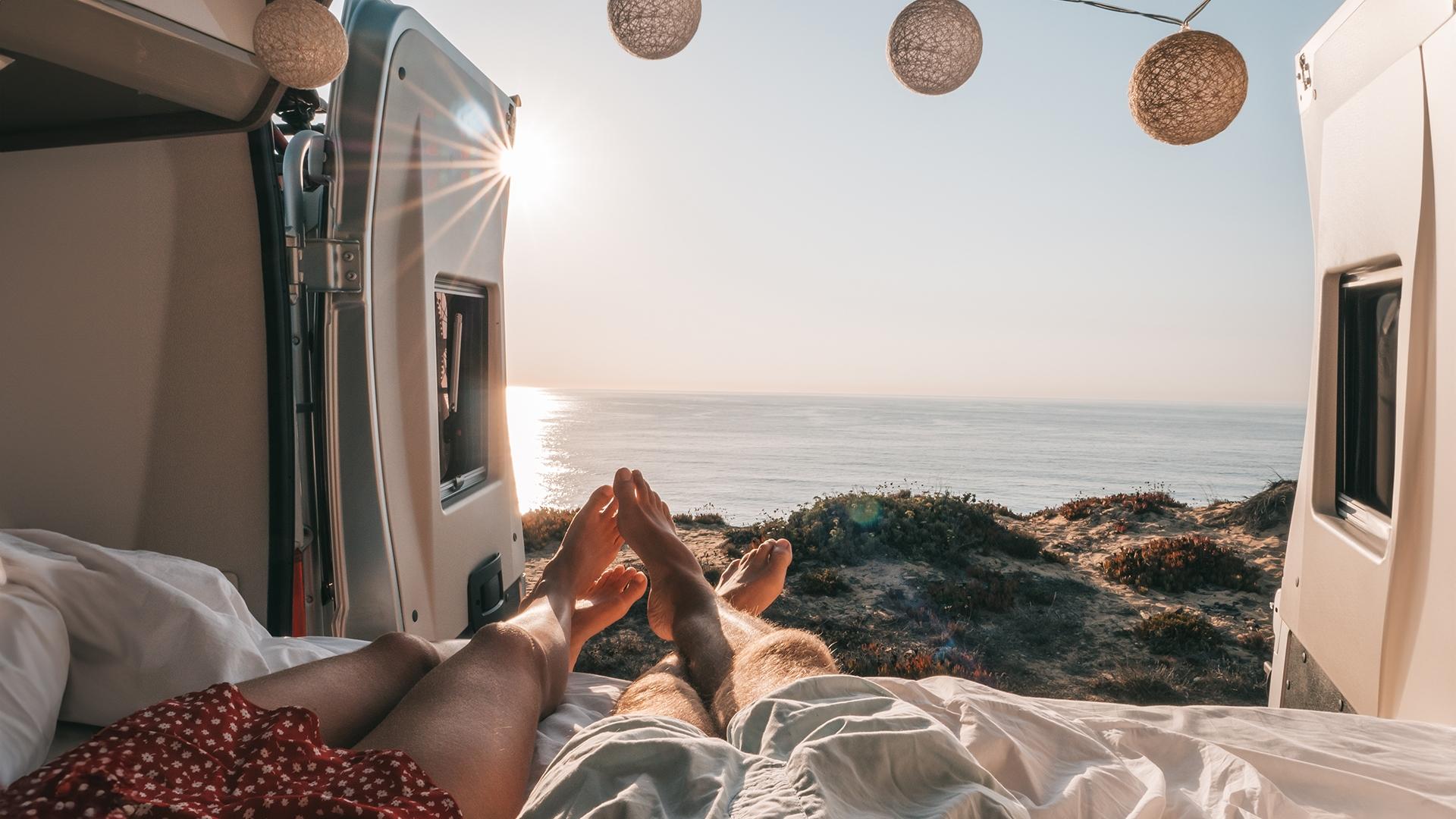How to convert a vehicle for vanlife?

Dreaming of converting a vehicle into a camper van so you can travel freely across Canada? It’s totally doable! Here are the essential steps to make sure your camper van build is safe, legal, and ready to hit the road.
What exactly is vanlife?
Vanlife is a minimalist and flexible way to travel by living in a converted van or camper. Inspired by social media trends (#vanlife) and sustainable living, vanlife appeals to people seeking freedom, nature, and a lower environmental footprint. It’s often associated with the iconic Volkswagen Westfalia and the growing popularity of nomadic living.
Vanlife in Quebec: A growing trend
How much does a van conversion cost?
Van conversion costs in Canada vary widely:
- A few thousand dollars for DIY van builds or modular removable camper kits (e.g. Roadloft)
- A few tens of thousands of dollars for permanent conversions including an electrical circuit
Your final cost depends on your budget, mechanical skills, and needs. Don’t forget to factor in taxes, vehicle inspections, camper van insurance premiums, and registration—especially if importing a van.
Legal requirements for camper van conversions in Quebec
Under Section 214 of the Highway Safety Code, a converted van must comply with the Motor Vehicle Safety Act, the Motor Vehicle Safety Regulations, and the Canada Motor Vehicle Safety Standards.
Basically, in addition to the vehicle’s conformity, alterations must not reduce stability or impair braking. This applies as much to the chassis as to the body, or to any system or mechanism.
Good to know: Converting a vehicle for vanlife can be tricky. Since no inspection is required post-conversion, unsafe builds can go unnoticed. Always prioritize safety when modifying your van.
Modifying seats in your camper van
You may remove one or more rear seats if you wish to have more living space for your layout. However, it is forbidden to alter or remove the front seats.
Good to know: Most conversion kits on the market are designed to adapt to the vehicle’s original configuration, without the need for any alteration.
Maximum weight limits for converted vans
Approximately 95% of vanlife setups are light-duty vehicle conversions with a gross vehicle weight rating (GVWR) under 4500 kg. This includes the vehicle’s curb weight plus payload (passengers, gear, water, etc.). Check your GVWR label inside the driver’s door.
Each fixed addition—solar panels, bed, fridge, sink, toilet, rooftop tent, storage, etc.—reduces the remaining available dry weight. You’ll need to limit the number of passengers or the amount of luggage—clothing, water, food, leisure equipment, rooftop box, etc.—accordingly.
Overloading your van and improper weight distribution can affect its handling and compromise your towing safety. The Highway Safety Code specifies that loads must be placed, secured, or covered to prevent compromising vehicle stability. An improperly secured load could even lead to a police or road inspector stop.
Non-permanent conversion kits are a good idea to ensure you don’t exceed the total weight permitted. Some conversion kits are heavier, but others weigh barely more than an additional passenger.
Electrical and gas systems in a converted van
Do not attempt to perform electrical and propane connection work yourself. Hire a certified professional to ensure the work complies with standards.
You could overlook important and even necessary information, especially to meet your insurer’s criteria. For example, distances between the power system and moving parts, or between heat sources and the fuel tank.
It is highly recommended to install carbon monoxide, smoke, and propane detectors.
Choosing the right materials
Whenever possible, choose materials that are:
- Fire-resistant, for your safety
- Moisture-resistant, to prevent warping or mould
- Lightweight, to improve fuel economy
- Eco-friendly, to lower your carbon footprint
Power and water management on the road
Living on the road means managing your own utilities. Plan for:
- A basic camper van electrical system: auxiliary battery, inverter, solar panels
- Water system: clean water tank, grey water tank, manual pump sink
- Portable toilets and showers: composting or chemical toilet, solar shower
Adapt based on your habits: trip length, stop frequency, service area availability, and seasons.
Vanlife in winter: Adapt your layout
Want to use your van year-round?
- Add van insulation (for winter) to the floors, walls, and ceiling
- Add a heater (diesel or propane)
- Protect water lines and tanks from freezing
- Ensure proper ventilation
Tip: Try sleeping a few nights in your van before spending the whole winter in it.
Best vehicles for vanlife conversions
Many types of vehicle are suitable for vanlife. Popular models include:
- RAM ProMaster: great interior space, good value
- Ford Transit: available with AWD
- Mercedes-Benz Sprinter: diesel options, reliable
- Chevrolet Express / GMC Savana: tough and durable
- Dodge Grand Caravan: compact, fuel-efficient, easy to convert
Shopping for your next van with vanlife in mind? Compare base prices, available conversion kits, and limitations by model.
Key things to check before choosing:
- Cargo capacity
- Interior space
- Fuel efficiency
- Insurance premiums
- Vehicle and tire size
- Maximum towing capacity, weight of trailer, and trailer hitches
Inspection, driver’s licence, and insurance: What to know
Mechanical inspection
No inspection is required after converting a vehicle for vanlife. The SAAQ considers these light-duty vehicles—not RVs or heavy vehicles—so logbooks or commercial standards don’t apply.
However, before buying a van for conversion, get it inspected by a CAA-Quebec approved facility to ensure it’s mechanically sound. If you’re importing a vehicle, confirm it meets Canadian safety standards.
Driver’s licence
Removable van conversions in your everyday vehicle don’t require a special licence or additional registration. This saves you money—whether it’s a DIY job or a kit-based install.
Insurance
Always inform your insurer of any modifications or added equipment. They may require an inspection or SAAQ certification, especially if you did the work yourself.
Be sure to check what your auto insurance covers (theft, accidents) versus your home insurance, for everything stored inside your van.
Good to know: Some insurers may refuse coverage if the vehicle doesn’t meet safety standards or is difficult to assess. Check with them before starting your project—every van is different.
Removable van conversion kits typically won’t raise your insurance premiums or registration fees like permanent conversions might. However, be sure to add all your gear and accessories to your home insurance to ensure protection in case of accidents.
In short, take the time to learn about the vanlife vehicle requirements in Quebec. Plan every step of the way, so that your vehicle remains functional, safe, and up to standard. Enjoy your road trips with peace of mind!
Our thanks to Roadloft for its contribution to the writing of this advice.

Benefit from personalized advice
Do you have questions about gas-powered or electric vehicles, driving, or need recommendations to find an Approved Auto Repair Service?

